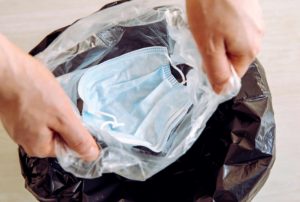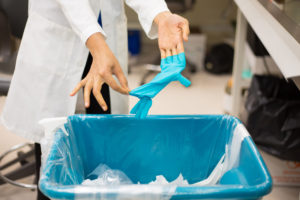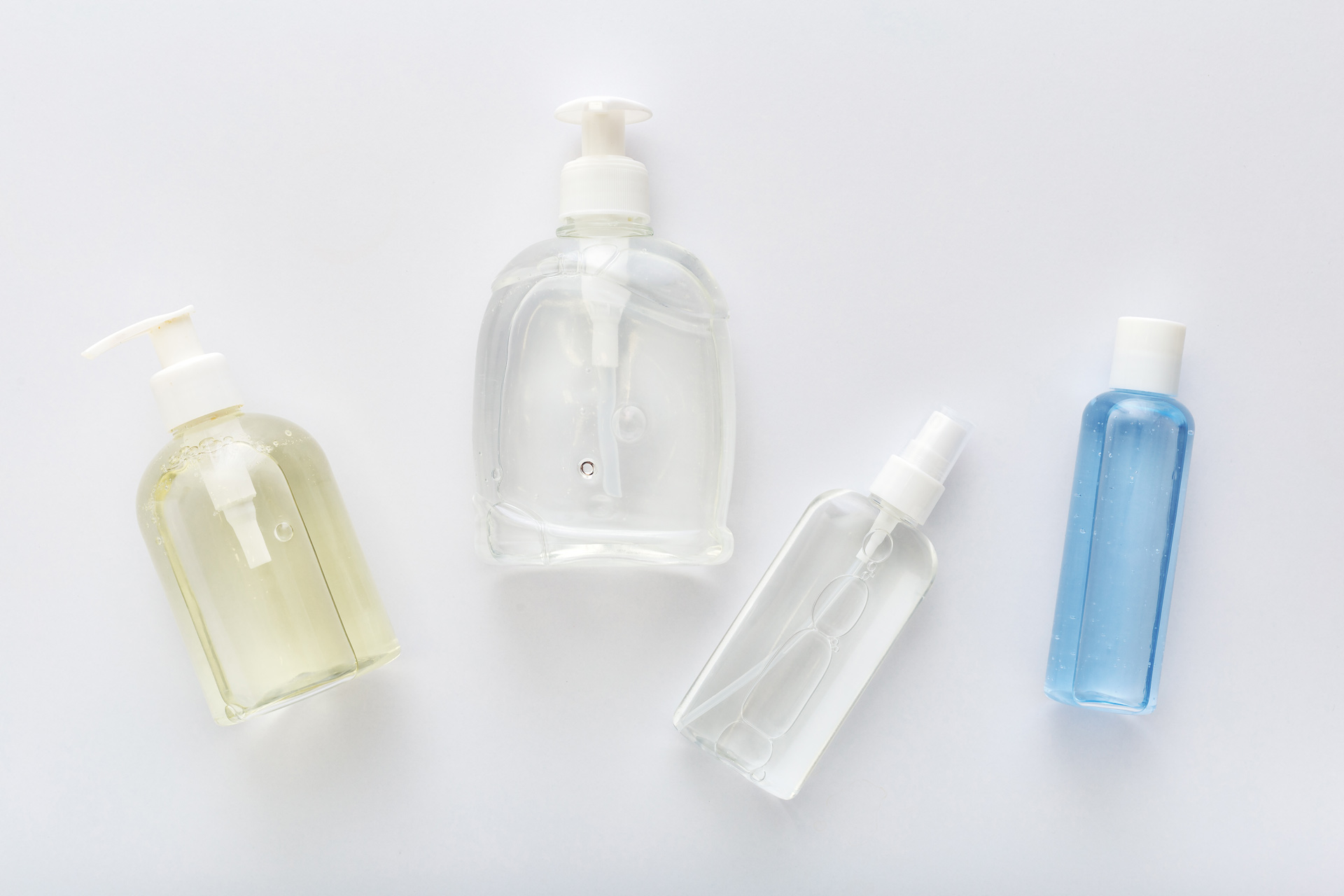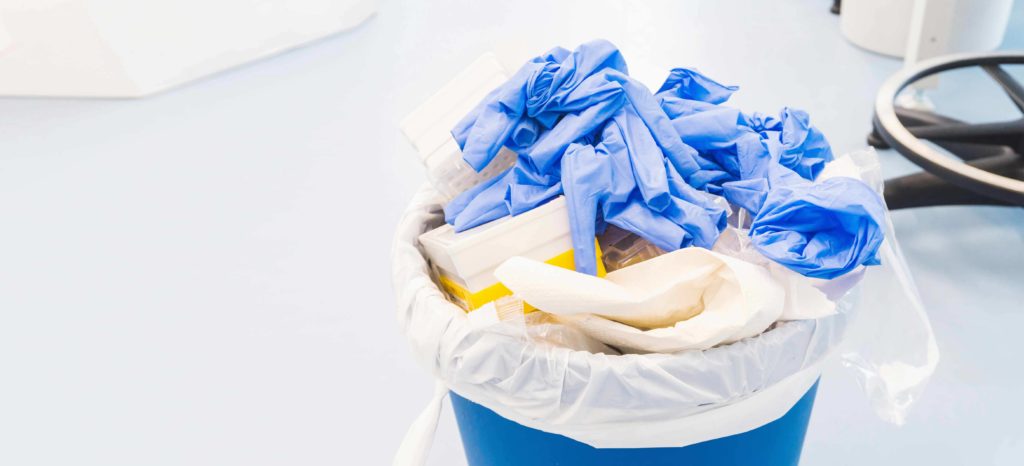There’s an overlooked result of the effects of COVID-19 that’s becoming very visible – a rise in Personal Protective Equipment (PPE) waste.
Masks, gloves, gowns, face shields, goggles, hand sanitizer bottles, and wipes plus all of the packaging and manufacturing waste associated with these essential items is showing up in our landscapes and oceans, contaminating recycling material at facilities, and lying around streets and suburbs.

The alarm was raised as early as February, however, the exponential increase in PPE usage around the world is now an even greater problem. Naturally, hospitals have seen a significant increase in their usage of PPE, but the real issue is the unprecedented rise in individual use. Additionally, while hospitals have procedures in place to deal with PPE waste, the general public do not, and most of this will end up in landfill or incinerators.
Why is PPE such an issue?
 PPE is, by design, single-use. Whether it’s a pair of disposable latex gloves used in healthcare settings or a readily available surgical mask worn by a member of the public, these items become ineffective if used more than once or for longer periods of time. This is compounded by the fact that, invariably, PPE is made of multiple materials, with some form of plastic usually constituting a large part of its construction.
PPE is, by design, single-use. Whether it’s a pair of disposable latex gloves used in healthcare settings or a readily available surgical mask worn by a member of the public, these items become ineffective if used more than once or for longer periods of time. This is compounded by the fact that, invariably, PPE is made of multiple materials, with some form of plastic usually constituting a large part of its construction.
PPE waste is also being manufactured and distributed in extraordinary quantities. Back in March, the WHO predicted a 40% rise in demand within the healthcare sector, and global shortages have been a constant within media coverage of the pandemic. Additionally, the CDC is recommending that members of the public wear masks when social distancing is difficult to maintain within any public place or encounter with non-household members.
Is PPE hazardous waste?
 The CDC currently advises that:
The CDC currently advises that:
“Medical waste (trash) coming from healthcare facilities treating COVID-19 patients is no different than waste coming from facilities without COVID-19 patients.”
While little is written about public use of PPE, the consensus is that it shouldn’t be considered hazardous waste in the context of COVID-19. This means you can dispose of PPE waste in your usual trash cans, although some recommendations state that if PPE is known to have come into contact with an infected individual, it should be disposed of in separate bags that are tied off.
Can PPE waste be recycled?
In short, not really. While the potential for transmitting disease through discarded PPE remains low, there aren’t the facilities designed to process this type of waste. Landfill and incineration are the most common disposal methods that minimize further handling.
As advised by the EPA, the recommendation is to reduce any threat of transmission through contact with waste despite the risks being minimal, but, there are certain products that have the ability to be recycled.
 Larger plastic and glass hand sanitizer bottles, for example, can usually be put into dedicated recycling bins, assuming they are made from plastics that your municipality can handle. Additionally, packaging, such as cardboard used for shipping PPE, may also be recycled depending on your local services.
Larger plastic and glass hand sanitizer bottles, for example, can usually be put into dedicated recycling bins, assuming they are made from plastics that your municipality can handle. Additionally, packaging, such as cardboard used for shipping PPE, may also be recycled depending on your local services.
PPE waste management initiatives are now being set up to find alternative ways to deal with PPE waste in more sustainable ways, with one research team discovering a method of turning gloves, face masks (including N95 masks), goggles, face shields, and gowns into biofuels. Additionally, Terracycle is now offering recycling programs for certain types of PPE used within the public sphere which will then be melted down and turned into different products.
We are collecting the non-woven facemasks and garments (which are mostly PP) and processing those into densified crumbs that can be used for new extrusion and compression molded products. For the gloves, we are collecting nitrile and latex (rubber) gloves and processing them into a cryo-milled rubber powder. This is a raw material for new rubber flooring applications, as well as ground cover and athletic field/turf support. – Terracycle
 What will happen to discarded PPE?
What will happen to discarded PPE?
As previously mentioned, most PPE will either be incinerated or disposed of in landfill. If incinerated, any remnants of the virus will be destroyed, but incineration is controversial and does not contribute to the circular economy. If landfill is the only option, it could take years to decompose. However, it is preferable to simply throwing PPE waste in the street where it litters our cities and ultimately our oceans.
How can I reduce PPE waste?
 For the general public, reusable cotton masks are advised by some authorities. If you decide to use one you can find detailed care instructions and advice on the WHO website. Additionally, a detailed breakdown of the effectiveness of each mask type can be found here
For the general public, reusable cotton masks are advised by some authorities. If you decide to use one you can find detailed care instructions and advice on the WHO website. Additionally, a detailed breakdown of the effectiveness of each mask type can be found here
Depending on how long the need for this increased consumption of PPE lasts will dictate what kind of measures are put in place for its recycling. In the meantime, keep up to date with the latest developments and guidance from trusted sources such as the WHO, the CDC, or the FDA.
Alternatively, for more information on how PPE waste handlers are dealing with this influx, how your business can reduce waste and streamline PPE waste management, subscribe to the RTS blog, read our dedicated resources on COVID-19, or contact one of our LEED-accredited advisors today.

